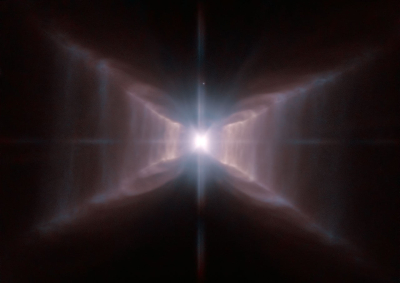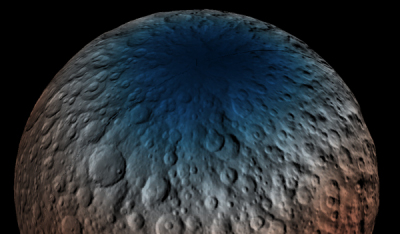Global elevation map of Mercury
The science team for Messenger have now released a new digital elevation model of Mercury’s global surface.
The new product reveals a variety of interesting topographic features, as shown in the animation above, including the highest and lowest points on the planet. The highest elevation on Mercury is at 4.48 kilometers [2.78 miles] above Mercury’s average elevation, located just south of the equator in some of Mercury’s oldest terrain. The lowest elevation, at 5.38 kilometers [3.34 miles] below Mercury’s average, is found on the floor of Rachmaninoff basin, a basin suspected to host some of the most recent volcanic deposits on the planet.
If you watch the animation at the link, you will notice that the high points tend to cluster in the lower latitudes, while the low points tend to favor the high latitudes, suggesting a very slightly bulged shape, which is not surprising considering Mercury’s close proximity to the Sun.
The data release today also included an additional map showing the known geological features in more detail.
The science team for Messenger have now released a new digital elevation model of Mercury’s global surface.
The new product reveals a variety of interesting topographic features, as shown in the animation above, including the highest and lowest points on the planet. The highest elevation on Mercury is at 4.48 kilometers [2.78 miles] above Mercury’s average elevation, located just south of the equator in some of Mercury’s oldest terrain. The lowest elevation, at 5.38 kilometers [3.34 miles] below Mercury’s average, is found on the floor of Rachmaninoff basin, a basin suspected to host some of the most recent volcanic deposits on the planet.
If you watch the animation at the link, you will notice that the high points tend to cluster in the lower latitudes, while the low points tend to favor the high latitudes, suggesting a very slightly bulged shape, which is not surprising considering Mercury’s close proximity to the Sun.
The data release today also included an additional map showing the known geological features in more detail.


